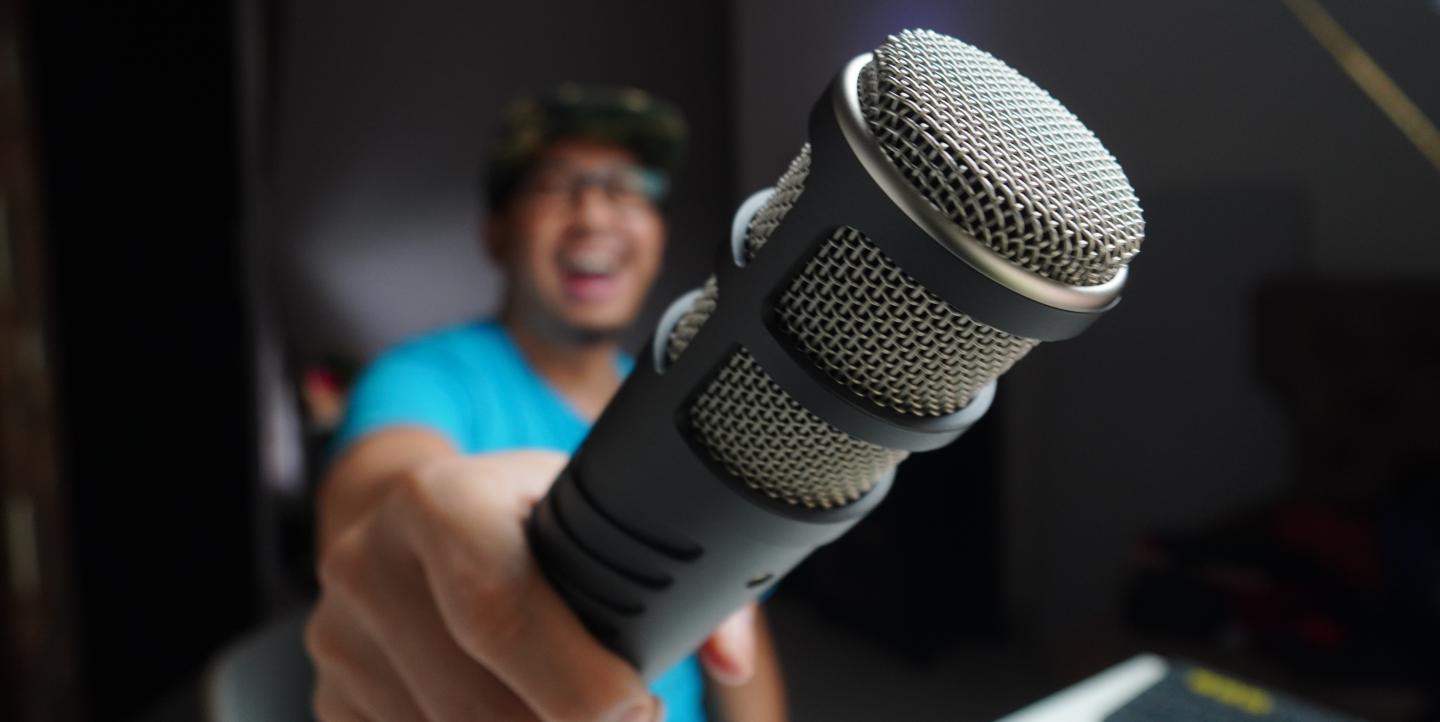Well over 400 million people – one in five internet users – are podcast listeners today. Especially in recent years, listenership has surged, and experts predict this growth will only continue.
Some podcasts, like The NPR Politics Podcast and BBC’s Global News Podcast, have cultivated large followings through their critical reporting on hard news and the newsrooms’ recognized brand.
Others have blown up thanks to social media, gaining a large portion of their following due to short clips posted on TikTok or Instagram. Look no further than the immensely popular sex advice and comedy podcast, Call Her Daddy, or the Wizards of Waverly Pod, which goes behind the scenes of the former Disney show.
TikTokers, YouTubers, professional athletes, actors and let’s face it, probably your mom or dad too, have all launched podcasts of their own in recent years rather than get left behind.
Given their popularity, podcasts can be an effective medium to counter the disinformation rampant across media and social media today.
In a recent ICFJ Empowering the Truth Global Summit session, ICFJ spoke with Amit Varma, writer, columnist and host of the weekly podcast, The Seen and The Unseen, about the role podcasting can play in amplifying credible reporting. Varma also offered tips on how to get started as a podcaster.
Amplify the truth
False information has been an issue throughout history. Our knowledge of the world is incomplete, and in an effort to fill in the blanks our minds become vulnerable to misinformation, explained Varma.
“Fake news has always been with us, but the problem is worse today because of technology and social media,” he added. Social media, Varma explained, creates a space for ideological tribalism to take root; narrative battles emerge and members stake out extreme positions, incentivized to attack those who might disagree with them.
Fact-checking alone can’t take on the vast amounts of disinformation circulating today. People need to develop a “skeptical mentality,” said Varma, opening themselves to new ideas and accepting that they don’t need to have an opinion on everything.
“Podcasting is the perfect media to build that skeptical mentality,” said Varma.
Simply put, creators can amplify truthful narratives on podcasts, and push listeners to consume information more critically.
Tell engaging stories, simply
Podcasters can employ practical, engaging storytelling techniques to attract listeners and keep them coming back.
For starters, keep it simple. When it comes to an audio-only format, structure is important – and less is often more. Foster an intimate environment with your listeners, one in which you talk to them and not at them. If you bring on guests, treat them respectfully. Don’t interrupt, and allow them time to tell their stories and offer insights, even if it means you’re doing more listening than speaking.
Identify the stories you want to cover. Chances are there will be an audience eager to tune in. You can launch a podcast on your own – one person is plenty if you have an engaging story to tell.
Show, don’t tell. If you have ever been able to visualize scenes and characters in your head when you read books, you know the power of words to foster mental images. Audio is no different.
Define your story and speak in an active voice. Ask yourself, suggested Varma: “Are you the main narrator? (Which is perfectly fine.) Are you a facilitator for other characters? Are you the story?"
Commit the time to make your efforts work. Consider putting out two episodes a week for a year, and then take stock of how they’ve performed, suggested Varma. If you don’t see results you like, you can move on, knowing you gave it a real try.
Build and engage your audience
There are relatively few barriers to entry for content creators interested in podcasting. No fees or licenses are required, and while big-time creators may use expensive equipment, new creators can get started with just a cell phone or laptop.
“You don't need a license to start a podcast,” said Varma. “You are limited only by your imagination and desire.”
Unlike, say, radio programs, which can get bogged down by fees and time limits, podcasts have a knack for attracting audiences with niche interests. This facilitates the emergence of podcasts covering a multitude of topics – whether it be gruesome crime stories, politics, or the ever important ones discussing Harry Potter or your favorite shows, like The Office.
Podcast listeners are often captive audiences – people commuting in their cars, traveling on a plane, or working out. Listeners aren’t flipping between platforms as they might when browsing social media platforms, for instance. This creates longer user sessions with more engaged listeners. To further engage listeners, journalists can cross-publish on social media platforms, too.
Varma pointed to the 1,000 true fans theory, to explain that you do not need a large following, like some well-known creators enjoy, in order to be successful. A creator needs to develop a direct relationship with only 1,000 loyal listeners, the theory lays out, to sustainably finance a project.
“It’s the most efficient way to consume deep content,” noted Varma. “Radio is blasting in the car while podcasting is a voice in your head.”
Disarming Disinformation is run by ICFJ with lead funding from the Scripps Howard Foundation, an affiliated organization with the Scripps Howard Fund, which supports The E.W. Scripps Company’s charitable efforts. The three-year project will empower journalists and journalism students to fight disinformation in the news media.
Photo by Medy Siregar on Unsplash.


